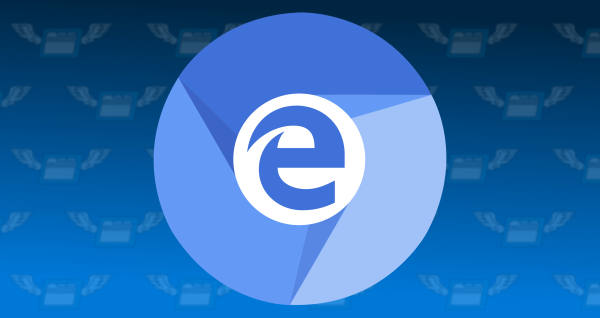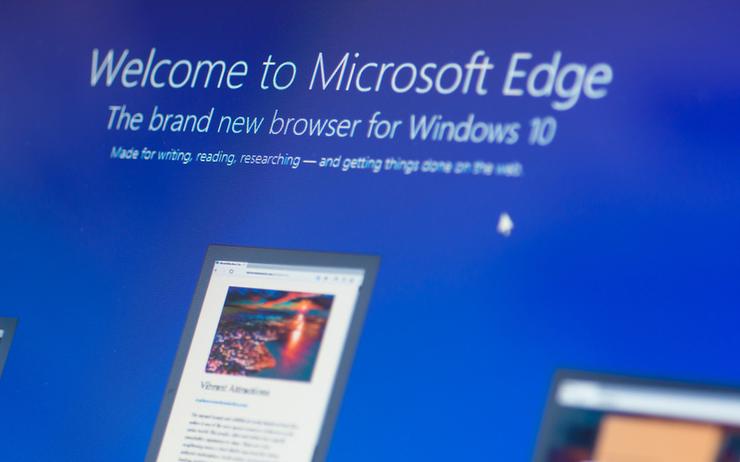
Microsoft on Thursday announced the biggest-ever change to its Edge browser.
The company is now rebuilding Edge to run on Chromium, Google’s open-source web rendering engine that powers the Chrome browser. The same engine powers other popular mobile browsers such as Opera and Vivaldi
The proprietary EdgeHTML engine underpinning the browser might be deserted in want of the Chromium code utilized by Google’s Chrome and a number of other different browsers. After the shift, Microsoft plans to finish Edge’s Home windows 10 desktop exclusivity through bringing it to Macs and older variations of Home windows.
“We are starting down a path to adopt Chromium open source in the development of Microsoft Edge on the desktop, becoming a larger contributor and user of its open source so that we can create better web compatibility for our customers and less-fragmentation of the web for all web developers.”
According to Windows Central Microsoft is in the early stages of the project, codenamed “Anaheim”, that is currently slated to replace Microsoft Edge for Windows 10. Instead of continuing to use the company’s EdgeHTML engine, Anaheim will reportedly be built upon Chrome’s open source Blink engine the claims are not ascertained.
Chromium is an open-source browser implementation that is used as a base by a number of browser developers, including Google (with its proprietary Chrome browser), Vivaldi, Opera, Yandex, Brave, and more. Simultaneous with the launch of Chrome in 2008, Google released the bulk of Chrome’s code as open source, birthing Chromium in the process.
The company, however, points out that it is not the first time Microsoft has embraced an open-source platform. It has used Angle, Web Audio, Brotli standards in the past. Going forward, the company aims to overhaul Edge browser for new ARM-based Windows devices. The browser will soon be available on Apple’s Mac devices as well.
Microsoft is hoping the dramatic change will help the browser function better on all devices including PCs and mobile phones. It also expects developers to leverage Google’s open-source code to further improve the Edge browser as well as solve one of their main challenges “fragmentation”.
In a letter to developers community, Microsoft in a post on Github said, “Although Microsoft Edge has very high web compatibility for both standards-based HTML and for capabilities added by highly-used browsers like Chrome, our unique web-platform codebase still faces occasional compatibility problems as web developers focus less on HTML standards and rationally focus on widely used platforms like Chrome to develop and validate experiences for their customers.”
“While we work hard to make updates and fix these issues continuously, our implementation of Microsoft Edge as a component that ships solely on the same schedule as the full Windows operating system has slowed our ability to update, causing platform fragmentation and exposing compatibility gaps. We think greater use of open source software (OSS) can improve this experience for our end-users,” it added.
Critics has been raised concerning this agreement, however Microsoft says that it wants to become a “significant contributor to the Chromium project” helping to improve things not only for web users, but also web developers. Microsoft is keen to stress that there is nothing to worry about for Edge users… Edge is not changing any time soon, and nor it is going anywhere.
But under the hood, things are changing:
As part of this work, Microsoft plans to make the new Edge browser available on Windows 7, 8.1, 10 and macOS, officials said. While Edge will continue to ship with Windows 10, Microsoft finally will be updating it independently of the operating systems on which it runs, meaning it will be updated and patched more frequently than Edge is now.
According to Microsoft, developers will have the option of trying out the new Edge starting in early 2019 when Microsoft releases a first preview of the updated browser. One of Microsoft’s stated reasons for moving to Chromium is to make developers’ lives easier — by enabling them to build and test against Edge just like they do other cross-platform, Chromium-based browsers.
Microsoft officials haven’t said when they expect the new Edge to roll out to the mainstream, but it won’t be anytime very soon, based on this schedule.










